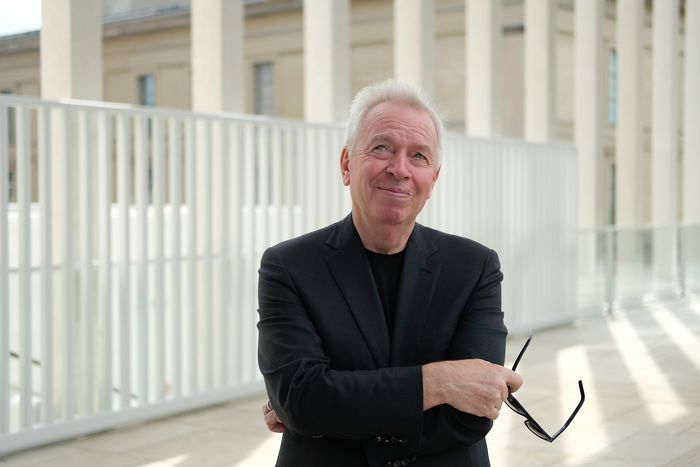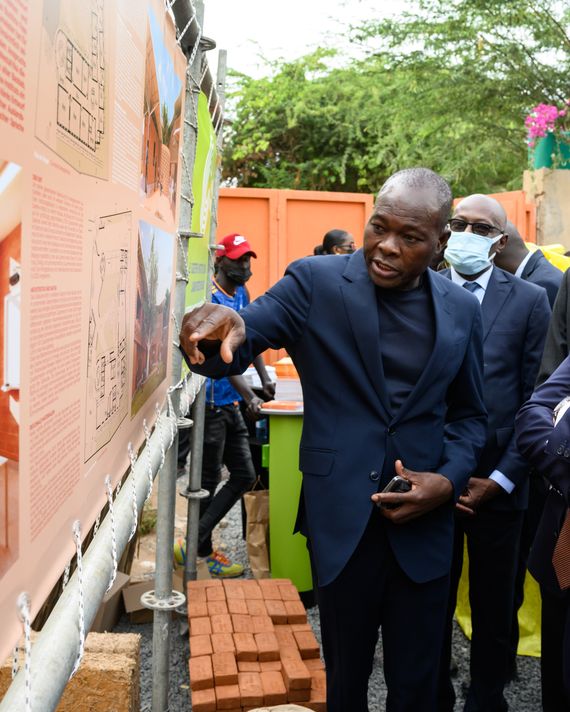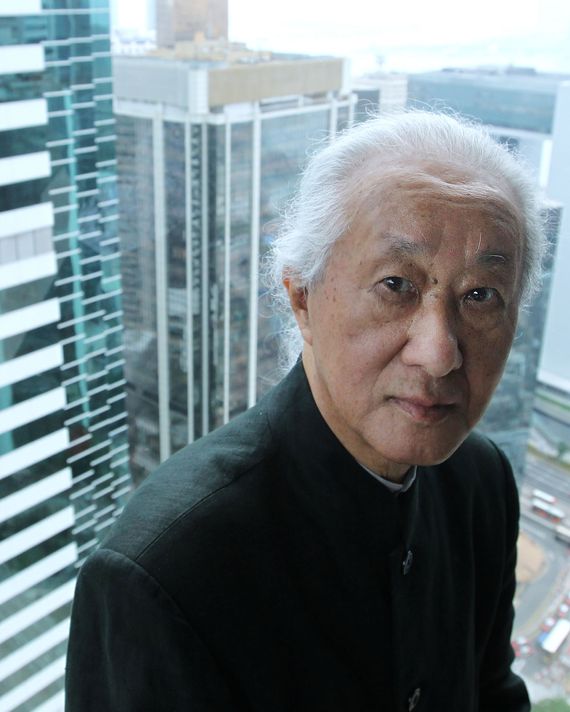
On Tuesday, the Pritzker Prize — architecture’s highest honor — was awarded to the British architect Sir David Chipperfield. A decade ago, this selection would not have come as a surprise. After all, Chipperfield is a committed and sensitive modernist whose work has been widely celebrated for many years. For those unfamiliar with his oeuvre, Chipperfield’s renovation of the Neues Museum in Berlin is representative; there, he blended the museum’s historical architecture and post–World War II ruins with new but unobtrusive galleries using subtle forms that make especially beautiful use of texture and natural light. The project is a powerful commentary on materiality and history, a case study in how to work with historical conflicts in the spatial realm. Chipperfield is respected by the architectural establishment for these gentle interventions, which also include the Procuratie Vecchie in Venice, a project cited by the Pritzker jury in which he took a surgical approach to restoring a 16-century palazzo for modern use, as well as such ground-up projects as the Amorepacific Headquarters in Seoul, in which simple shapes like boxes are mixed with intricate detailing, much of which is borrowed from local visual languages. He is, in every sense of the word, a talented architect.
However, given the Pritzker’s recent activist trajectory, his selection is unexpected. In 2022, the prize selected Francis Kéré, the Burkina Faso–born, German-based architect renowned for his focus on sustainability, vernacular construction techniques, and locally sourced materials, all of which examines the project of architecture in places and times of scarcity. The year prior, the prize went to the French architects Lacaton and Vassal, whose fine work in public housing and preservation is decidedly democratic, extremely subtle, and politically outspoken. Other recent Pritzker selections, such as the Irish duo Yvonne Farrell and Shelley McNamara (2020), Japanese postmodernist Arata Isozaki (2019), and Indian high-modern master Balkrishna Doshi (2018), continued in this vein, highlighting a diverse range of groundbreaking practices that, while experimental, are too often considered peripheral in the field. The last decade of the prize has also highlighted architects and methods from around the world, not just the Global North — a significant turn in internationalization. This shift is dramatic when one compares these names with those of winners prior to 2010, an era when the prize selection elicited little surprise or intrigue. Peter Zumthor, Jean Nouvel, Zaha Hadid, Thom Mayne, Richard Rogers, Rem Koolhaas, the list goes on. Each of these firms were already crowned as the starchitects of their day. Chipperfield belongs in that list. He is a long-praised, well-known European architect finally getting his due.
One should always look at awards like the Pritzker with a certain skepticism because they continue to foster the myth that architecture is the solo pursuit of a handful of geniuses rather than a multibillion-dollar enterprise in which millions of nameless, often underpaid practitioners power the creative engine and do the brute labor of getting it done. But I would hesitate to dismiss the institution altogether. The Pritzker Prize still matters simply because it has the potential to change architectural discourse, and its issuance remains one of the few days of the year when architecture breaches its niche audience and into the general news. The choice of forward-thinking and provocative practices such as Kéré’s and Lacaton and Vassal’s have brought firms largely confined within the industry into the broader public consciousness. It has rewarded the efforts of those whose work has changed the status quo as well as those who have helped shape it from the global periphery.


Chipperfield’s selection marks an end to that decade-long run. This is not to say that he is not an excellent architect; he most certainly is. But it represents a surprisingly conservative turn, and it would be remiss of me as a critic not to wonder whether his selection is emblematic of a political climate in which there has been significant pushback against the progressive social movements of the 2010s. Architecture and urbanism have themselves become unexpected vectors for right-wing culture wars, if not outright fascistic rhetoric. Only last week, Donald Trump was crowing for a return to European aesthetic traditionalism while conspiracy theorists around the world flocked to the streets to decry the idea of the 15-minute city, an urban-planning principle emphasizing greater access to amenities and more robust public transit. The Trump-era Pritzker selections — from the progressive, environmentally sensitive Spanish architects Rafael Aranda, Carme Pigem, and Ramon Vilalta in 2016 through Kéré’s in 2021 — insisted upon an architecture that elevated everyday life and challenged elitist ideals, perhaps because there was a general consensus among the arts at that time that their liberal, humanistic principles were collectively under attack. The dangers of that era are no less present now. In fact, they are elevated. The backlash against feminism and queerness has resulted in abortion bans and genocidal rhetoric toward transgender people. Censored books are disappearing from school shelves. Right-wing coups are being uncovered not just in the U.S. but also in Chipperfield’s Europe. The climate crisis only escalates more and more every year, and there are myriad architects whose works grapple with the environment more urgently than Chipperfield, who is best seen as a sensitive interventionist.
Representation, of course, is only the first step in a long process of social progress. But in our global revanchist turn, one cannot deny that it matters that Kéré is a Black African working with non-western methods. It matters that Lacaton and Vassal are socialists advocating for restoring public housing and that Farrell and McNamara are women whose work is humanist in scope. It matters that already historicized architects like Arazaki and Doshi are finally, through their nomination, cemented as part of the canon. It also matters for architecture that the prize, which for decades felt like a trivial coronation — the icing on the cake of an architect’s career in the limelight — had reoriented toward boundary-breaking and less traditional practices. The Pritzker Prize jury had a chance (and perhaps an imperative) to be brave once again. This year, it did not take it.




